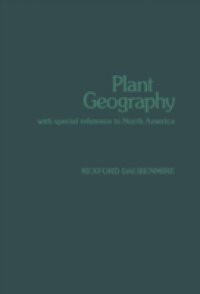Plant Geography: With Special Reference to North America covers main concepts of the two major approaches to plant geography, namely, the floristic plant geography and the ecologic plant geography. Floristic plant geography primarily studies evolutionary divergence, migration, and decline of taxa, as influenced by past events of the earth's history. Ecologic plant geography is an alternative approach to plant geography, which takes plant communities as units having ranges to be interpreted, dominated by sociologic and physiologic, rather than phylogenetic and historic considerations. Under the floristic plant geography part, topics covered include interrelations among floristic plant geography, taxonomy, and geology; the relation between plant dissemination and migration; evidence of the dynamic character of plant ranges; and migratory route. After a brief introduction to the evolution of North and South America vegetation, the book discusses the ecologic plant geography section that focuses on various vegetation regions in North America, including Tundra, subarctic-subalpine forest, temperate mesophytic, xerophytic forest, and chaparral and steppe regions and temperate affinity forests in Middle America. Other regions examined include the desert and marine regions, as well as the microphyllous woodland, tropical savanna, rain forest, and tropical alpine. With great information on geologic history of each vegetation unit and paleontology, this book will be helpful to paleobotanists, historical geologists, and taxonomists.

